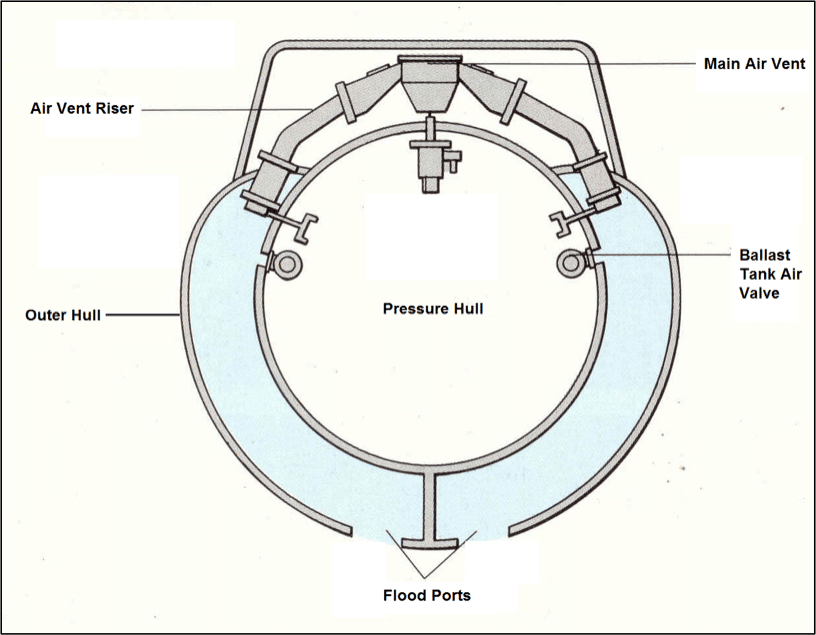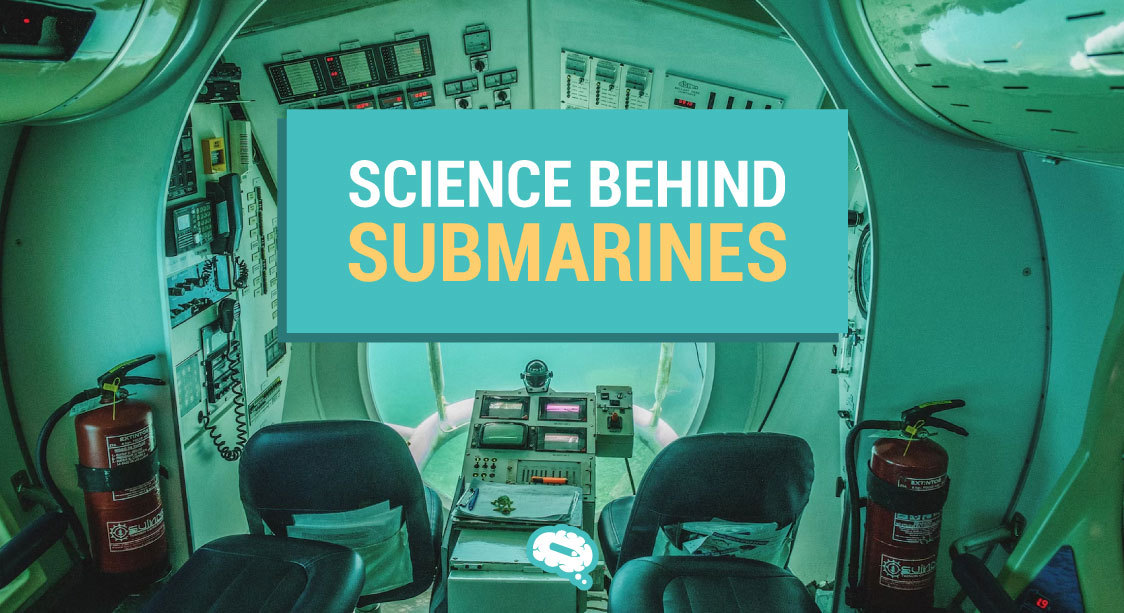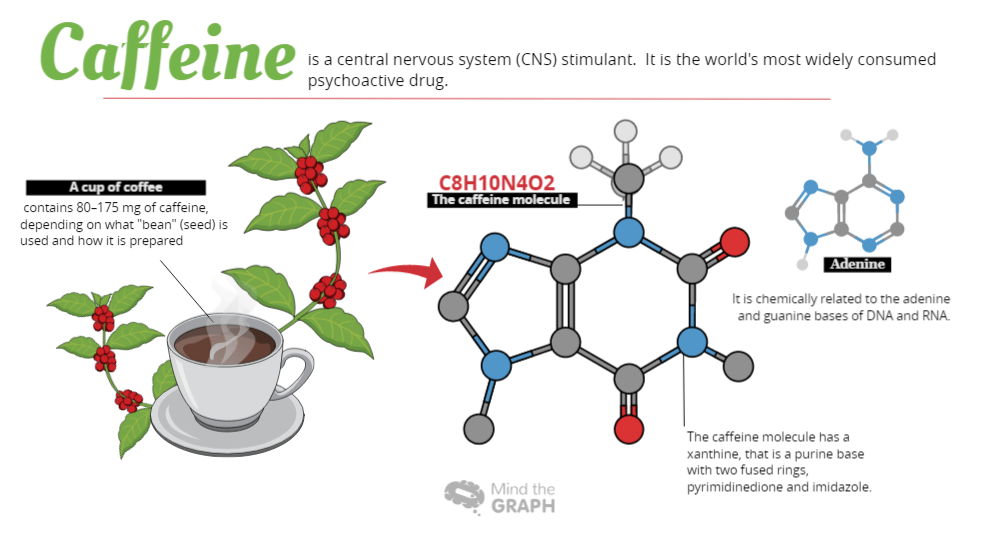“Exploring the Depths: The Fascinating Science Behind Submarines” takes readers on an immersive journey into the captivating world of underwater exploration. This article provides a detailed introduction to the scientific principles that make submarines possible, shedding light on the remarkable technology that enables these vessels to venture into the deep sea.
Through engaging descriptions and informative explanations, readers will gain a deeper understanding of how submarines are designed to withstand extreme pressures and navigate through the vast underwater landscapes. The article also explores the essential role of sonar technology in submarine operations, showcasing how sound waves are utilized to detect objects and communicate in the vast, silent depths.
What Is A Submarine?
A submarine is a specialized watercraft designed to operate underwater. It is a vessel that can navigate beneath the surface of the water and travel for extended periods without needing to resurface. Submarines are typically used for various purposes, including military, scientific research, exploration, and underwater rescue missions.
Submarines are unique in their construction and functionality. They are equipped with a watertight hull that allows them to withstand the immense pressures of the deep sea. The hull is often made of steel or other strong materials and is designed to maintain the integrity of the vessel even at great depths.
Submarines have propulsion systems that enable them to move through the water. A combination of diesel engines for surface travel and electric motors for underwater propulsion can provide the necessary power for these systems. Some advanced submarines even utilize nuclear reactors for extended underwater endurance and increased speed.
To control their depth and buoyancy, submarines use ballast tanks that can be flooded with water or emptied of water to adjust their weight and displacement. By regulating the amount of water in these tanks, submarines can either rise to the surface or descend to various depths.
Submarines also employ various navigation and communication systems, including sonar technology, which uses sound waves to detect objects in the water and aid in underwater navigation. Additionally, submarines are equipped with life support systems to provide a habitable environment for the crew during their submerged operations.
History Of Submarines
Submarines have a rich history that spans several centuries. Here is a brief summary:
- Ancient Beginnings: The concept of underwater vessels dates back to ancient times. Greek historian Thucydides mentioned a device used for submerging in the 5th century BC.
- Early Submersibles: The first practical submersible, known as The Turtle, was built during the American Revolutionary War in 1775. It was a hand-powered vessel used for reconnaissance.
- Submarine Development: In the 19th century, inventors like Robert Fulton and Narcís Monturiol made significant contributions to submarine development. Fulton’s Nautilus and Monturiol’s Ictineo series showcased advancements in propulsion and design.
- Submarine Warfare: Submarines gained prominence during World War I and World War II. German U-boats played a crucial role in naval warfare, disrupting enemy supply lines and engaging in attacks.
- Nuclear-Powered Submarines: The advent of nuclear power revolutionized submarine technology. The USS Nautilus, launched in 1954, was the world’s first operational nuclear-powered submarine, offering extended underwater endurance.
- Modern Submarines: Today’s submarines are equipped with advanced technologies, including sonar systems, stealth capabilities, missile launch systems, and improved hull designs. They serve various purposes, such as defense, research, and exploration.
Components Of Submarines

The science behind submarines is a complicated subject, considering that submarines are complex machines composed of various components that enable them to operate underwater. Here are some essential components of submarines:
Ballast Tanks
These specially designed tanks control the submarine’s buoyancy by adjusting the amount of water or air they hold. When the tanks are filled with water, the submarine becomes heavier and sinks. When the tanks are filled with air, the submarine becomes lighter and rises to the surface.
Outer Hulls
The outer hull of a submarine is a strong and watertight structure that provides protection against the immense pressures of the ocean. It also houses various systems and equipment, including the propulsion system, navigation instruments, and weapons.
Trim Tanks
Specifically positioned within the submarine, trim tanks are smaller tanks designed for a particular purpose. Their purpose is to fine-tune the submarine’s balance and stability while submerged. By adjusting the water level in these tanks, the submarine can maintain its desired depth and maneuver more effectively.
Diesel Engines And Gasoline Engines
Many conventional submarines are powered by diesel engines when running on the surface. These engines drive generators that produce electricity to power the submarine’s systems. Some submarines also have gasoline engines for increased speed and maneuverability.
Nuclear Reactors And Nuclear Power
Nuclear-powered submarines utilize a nuclear reactor to generate heat, which is then converted into steam to drive turbines and propel the submarine. This enables extended underwater endurance and higher speeds compared to diesel-powered submarines.
Modern Submarines And Nuclear Submarines
Modern submarines have undergone significant advancements in technology, making them more capable and efficient in their operations. Nuclear submarines, a subset of modern submarines, have unique characteristics due to their propulsion systems. Here are some key points about the differences between modern and nuclear submarines:
- The primary difference between modern and nuclear submarines lies in their propulsion systems. Nuclear submarines utilize nuclear reactors for power, while modern submarines often rely on diesel engines, fuel cells, or air-independent propulsion systems.
- Nuclear submarines have virtually unlimited range and endurance, allowing them to operate globally without the need for frequent refueling. Modern submarines have a more limited range and endurance, requiring regular refueling or recharging.
- Nuclear submarines are capable of higher speeds compared to modern submarines, thanks to their nuclear propulsion systems.
- Modern submarines are typically smaller and more maneuverable than nuclear submarines, which can be larger and more heavily armed due to their increased power capabilities.
American Submarines
The United States has a long and storied history in the development and operation of submarines for military purposes. The U.S. Navy operates a diverse fleet of submarines, including both conventional and nuclear-powered vessels. American submarines are known for their advanced technology, stealth capabilities, and versatility in a wide range of missions.
The U.S. Navy’s submarine force is divided into two main categories: attack submarines (SSNs) and ballistic missile submarines (SSBNs). Attack submarines, such as the Los Angeles class and Virginia class, are designed for various roles, including anti-submarine warfare, anti-surface ship warfare, and land-attack missions.
Ballistic missile submarines, such as the Ohio class and the future Columbia class, serve as a crucial part of the U.S. strategic nuclear deterrence, carrying nuclear-armed ballistic missiles.
Military Submarines
Submarines play a critical role in modern naval warfare and are an integral part of many countries’ military forces. Military submarines are designed for a range of missions, including intelligence gathering, surveillance, reconnaissance, and offensive and defensive operations.
They provide unique capabilities for operating stealthily beneath the surface, enabling them to approach targets undetected and launch surprise attacks if necessary. Military submarines often incorporate advanced technologies, such as sonar systems, navigation equipment, and sophisticated weapons systems.
They are equipped with torpedoes, cruise missiles, or ballistic missiles, depending on their intended mission and role within the navy. The size, capabilities, and specifications of military submarines vary among countries, reflecting their respective naval strategies and requirements.
Buoyancy In The Ocean Waters
Buoyancy is a fundamental principle of the science behind submarines and it plays a crucial role in the behavior of objects in the ocean waters. It is the upward force exerted on an object immersed in a fluid, such as water, that opposes the force of gravity. Understanding buoyancy is essential for various marine activities and engineering applications, including the design and operation of submarines, ships, and underwater structures.
Weight Of Water
The concept of buoyancy is closely related to the weight of water displaced by an object. When an object is submerged in water, it displaces a volume of water equal to its own volume. This displaced water exerts an upward force on the object, which is known as the buoyant force. The magnitude of this buoyant force is equivalent to the weight of the water displaced by the object.
Positive Buoyancy, Negative Buoyancy, And Neutral Buoyancy
Objects in water can have different buoyancies depending on their weight and the density of the water. Positive buoyancy occurs when the object’s weight is less than the weight of the water it displaces, causing it to float to the surface. Negative buoyancy, on the other hand, occurs when the object’s weight is greater than the weight of the displaced water, causing it to sink. Neutral buoyancy refers to a condition where the object’s weight is equal to the weight of the water displaced, resulting in it neither sinking nor floating but remaining suspended at a specific depth.
The concept of buoyancy is critical for divers, submarines, and other underwater vehicles. By manipulating their buoyancy, divers can control their ascent, descent, and overall buoyant behavior in the water. Submarines and other underwater vehicles use buoyancy control systems, such as ballast tanks, to adjust their buoyancy and achieve the desired depth.
Understanding buoyancy and its effects on objects in water is essential for various marine activities, engineering designs, and scientific research. It allows us to navigate and explore the ocean depths, develop efficient vessels, and study the behavior of marine organisms.
How Do Submarines Withstand Pressure?
Submarines withstand pressure through various design features and engineering techniques that ensure their structural integrity and protect the crew from the high-pressure conditions underwater. Some of the key factors that contribute to their ability to withstand pressure include:
- Strong hull design: Submarines are built with robust materials and structures to withstand the external pressure exerted by the water.
- Pressure-resistant windows: Specialized windows, such as acrylic or sapphire, are used in certain areas to maintain visibility while withstanding high pressures.
- Watertight compartments: Submarines are divided into multiple watertight compartments, such as Outer Hulls, to prevent water ingress and maintain structural integrity.
- Reinforced pressure hulls: The pressure hull, which houses the crew and critical equipment, is constructed with reinforced materials to resist the crushing forces of deep-sea pressures.
- Ballast tanks: As stated, submarines use ballast tanks to adjust buoyancy and control their depth. These tanks can be flooded or emptied to regulate the submarine’s ascent or descent.
- Pressure equalization systems: Submarines have systems in place to balance the internal and external pressure, ensuring the pressure inside the vessel remains relatively constant with the surrounding water.
Role Of Sonar Technology In Submarines
Sonar technology plays a crucial role in submarines, enabling them to navigate, detect targets, and gather essential information underwater. Here’s a summary of the role of sonar technology in submarines:
- Navigation and Obstacle Avoidance: Sonar helps submarines navigate safely and avoid underwater obstacles.
- Target Detection: Sonar systems detect and track other vessels, including ships, submarines, and underwater objects.
- Communication: Sonar enables secure communication between submarines and surface vessels underwater.
- Reconnaissance and Intelligence Gathering: Sonar systems gather valuable information about underwater activities.
- Anti-Submarine Warfare: Sonar assists submarines in detecting and tracking enemy submarines.
Titan Submersible Implosion
The Titan submersible implosion was a tragic incident that occurred during a mission to explore the wreckage of the Titanic in June 2023. The submersible, operated by OceanGate, experienced a catastrophic loss when its pressure chamber imploded, resulting in the death of all five occupants on board. The incident sparked extensive search and rescue efforts, investigations, and discussions about safety and the future of deep-sea exploration.
Timeline:
- 16-17 June: The expedition departed from St. John’s, Newfoundland, aboard the research ship MV Polar Prince, with the mission scheduled to start on 18 June.
- 18 June: The dive operation began, with Titan communicating with the support ship initially. However, communication ceased at 11:15 a.m., suggesting an emergency situation.
- 22 June: After four days missing, a debris field was discovered near the Titanic wreck site, confirming the loss of the submersible. Pieces of Titan, including the tail cone and the forward and aft end bells, were found on the seabed.
- 23 June: A new mission to the debris field commenced, with efforts to search and document the wreckage.
- 28 June: The support ship, Horizon Arctic, returned to St. John’s Harbour with the recovered debris and presumed human remains.
Immediate Reactions
The incident garnered widespread attention, with discussions about the scale of the search and rescue efforts, comparisons to other maritime tragedies, and debates about the financial implications of high-risk adventuring.
Criticisms And Reflections
Various individuals, including deep-sea explorer James Cameron, expressed concerns about the safety of the submersible, the choice of materials, and the need for stricter regulations in deep-sea exploration.
Possible Causes
The exact cause of the Titan submersible implosion has not been determined definitively. Possible causes include structural failure, hull delamination, viewport failure, material choice, and the absence of safety regulations. These factors could have contributed to the collapse of the submersible’s pressure chamber under extreme pressure at depth. Official investigations are underway to determine the precise cause of the implosion.
The Titan submersible implosion serves as a tragic reminder of the risks involved in exploring extreme environments and has prompted a reassessment of safety protocols and practices in submersible operations. The incident will continue to be investigated, and its findings may shape the future of deep-sea exploration endeavors.
Over 75,000 Accurate Scientific Figures To Boost Your Impact
Mind the Graph is a game-changing platform for scientists seeking to elevate the impact of their work through visually stunning and accurate figures. With access to over 75,000 scientifically precise illustrations, customizable templates, graphing tools, and image editing features, researchers can effortlessly create captivating visuals that captivate audiences and effectively communicate complex scientific concepts. Sign up for free.


Subscribe to our newsletter
Exclusive high quality content about effective visual
communication in science.




